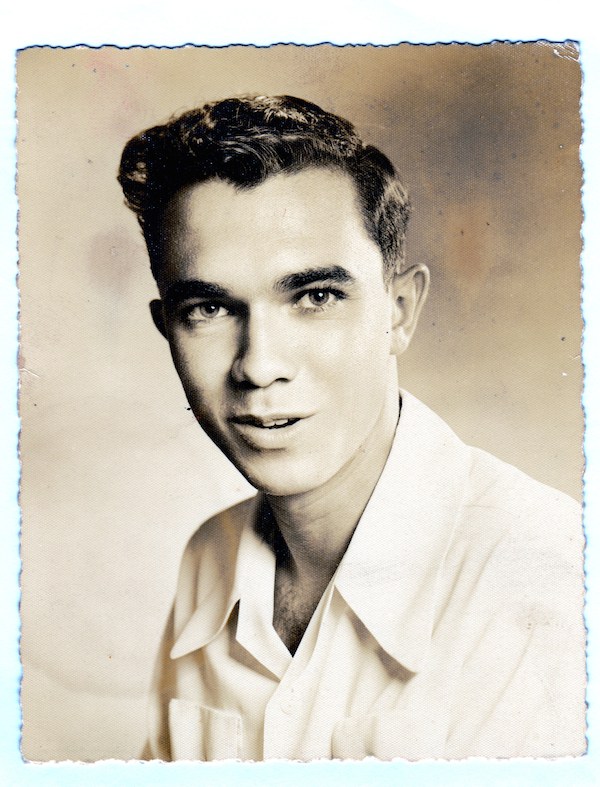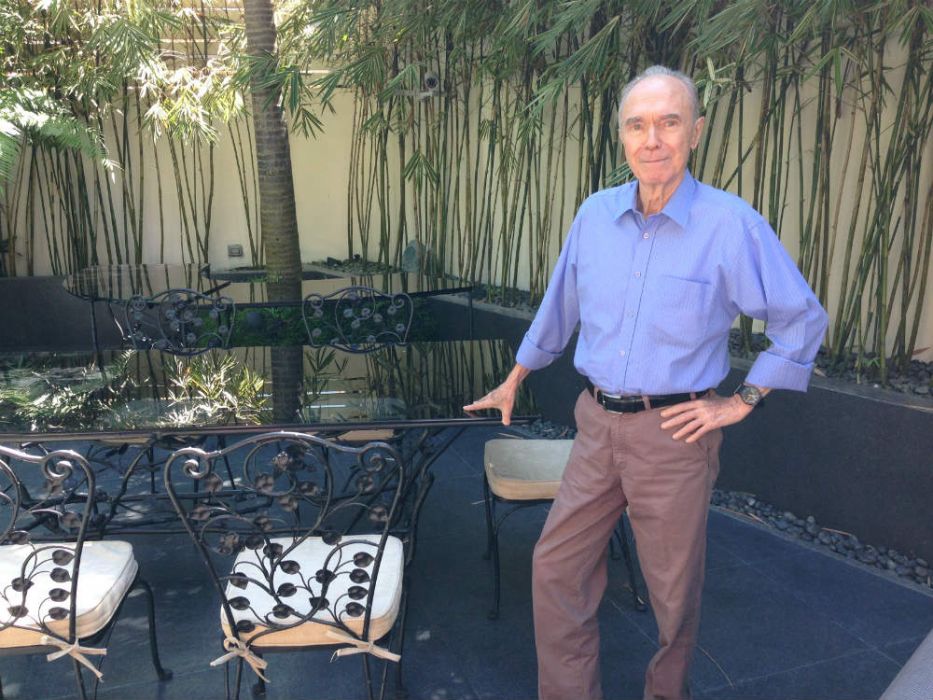Go (coco)nuts! Share this story with your friends.
A museum dedicated to artist Juvenal Sansó is opening in San Juan. Housed in an eye-catching white structure that features a vertical garden and undulating waves on its façade — the task of remodeling the 1970s split-level house into a stylish museum fell mainly to lead designer Camilo Vazquez of Vazdesigns, while AJ Moldez and Associates took care of the landscaping — Fundacion Sansó will be a repository not just of the 85-year-old artist’s works. It is a living museum, in that it has a permanent exhibition on the second floor, and a changing exhibition on the first and middle floors featuring other artists.
With the Fundacion Pacita in Batanes, BenCab Museum in Baguio and the Museo Orlina in Tagaytay, Fundacion Sansó seems to be part of a trend of spaces named after renowned Filipino artists.
Approximately 550 sqm, the various museum levels allow the visitor a small break, like a breather or palate cleanser, before experiencing another section altogether. Ottomans or benches are placed strategically for some visitors who wish to pause or ponder in front of a particular artwork, such as a wall filled with Sansó’s textile patterns, which display a playfulness and joie de vivre in the use of color.
Sansó mastered a variety of media — oils, watercolors, printmaking, sculpture and even textile design — and the art currently on display shows a curatorial restraint which allows his works to speak to the careful viewer.
Notes detailing the artist’s early years give visitors context: His gritty encounters with urban life as a 14-year-old bus conductor plying the Quiapo-Sta. Ana route, a close brush with death during the War, the struggle to prove himself worthy of further education abroad — these enhance the appreciation of seeing his progression from technically proficient paintings in his student years to angst-ridden post-World War 2 depictions of shanties, grotesque figures, or death masks in nightmarish landscapes.
Many of those familiar with Sansó’s more recent work employing vibrant or jewel-like colors may probably be shocked by this dark phase, but it is a milestone that shows how far he has come, and how much more he is prepared to explore as an artist.
Various selected quotes from the artist can be found in different sections, as if annotating or explaining certain phases or bodies of work. Examples of early prints on display demonstrate a firm grasp of visual texture, which serve to entrance and draw the viewer into exploring the lines and strokes created by an artist who has invested himself in the process of creation.

Juvenal Sansó circa 1947. When he was 14 years old, he worked as bus conductor plying the Quiapo-Sta. Ana route.
But the photos of the maestro in light moments (especially the one doodled over by a mischievous buddy) show a capability for play and the desire to share his knowledge and technique even from his early years. A haunting example of a Sansó sculpture stands in a corner, titled “Homage to Baudillaire,” perhaps referencing Les Fleurs du Mal, a skull perched upon a piece of coral — both having acquired a green patina by the artist’s design — and a colorful head of flowers.
The artist’s facility for the written word is also demonstrated with some poems written in English and Spanish.
Sansó’s exhibit also acknowledges the valuable support he has gotten from patrons like fashion doyenne Elsa Schiaparelli, the creative Balenciaga, Imelda Marcos — and leading art authority Purita Kalaw-Ledesma, whose high opinion of young Juvenal’s talent would free him from working at the family-owned Arte Español. This freedom, never taken lightly, would be used in the passionate pursuit of exploration and trying to exceed his limits as an artist. Now, with the museum in place, it will be time to give back and encourage another generation.
Intended to also be an educational resource, art education programs for children and adults, as well as a changing exhibition program featuring other artists are also being planned and programmed for the coming year. “Mr. Sansó has always wanted to share his works, particularly to young artists,” relates museum director Dida Salita.
Part of the current exhibit includes examples of the artist’s renderings of opera set and costume designs. Curator Ricky Francisco shares that close friends of the artist had planned and put it into motion. “Fundacion Sansó has been in the works for many years,” he says. “Mr. Sansó’s practice is very rich and it is a good source of learning and inspiration. The idea of opening a center to house the works and archives of Mr. Sansó for the public to enjoy has been brought up by the friends of Mr. Sansó, it is only now that things fell into place.”

Juvenal Sansó circa 1970s. His patrons included fashion doyenne Elsa Schiaparelli, the creative Balenciaga, Imelda Marcos and leading art authority Purita Kalaw-Ledesma.
Growing up in Manila from the age of five after his family emigrated from Spain to start their own business specializing in beautiful wrought-iron items, Sansó was enrolled as a special student at the University of the Philippines School of Fine Arts. There, he studied under such professors as Fernando Amorsolo, Dominador Castañeda, and Ireneo Miranda — then he took special classes at the University of Santo Tomas.
In 1950, the young student won the top prize of the Art Association of the Philippines competition, in the watercolor category, for “Incubus”. He repeated the feat the following year with “Sorcerer” which won first prize in the AAP oil category. During the same year (1950), he also won third place in the Shell Art Competition and left for further studies in Europe at the Academia di Belle Arti in Rome after establishing residence in Paris. He also enrolled at L’ Ecole Nationale Superieure des Beaux-Arts.
Since then, his works have been collected by prestigious museums around the world such as the Musee d Art Moderne, Paris; Museo de Arte Contemporaneo, Madrid; the Smithsonian Institution, Washington, DC; the Metropolitan Museum, New York; the Museum of Modern Art, New York; the Art Institute of Chicago; and San Francisco Museum among many others.
In the Philippines, one can find his works in the National Museum, Ateneo Art Gallery, Lopez Museum and the Cultural Center of the Philippines, as well as in many respected private collections. He has meritoriously earned three medals of distinction from the three countries he has resided in over the years. These include the King’s Cross of Isabella from the King of Spain, the order of Chevalier from the French Government and the Presidential Medal of Merit given by the Republic of the Philippines.
At the moment, Francisco says the museum is still finalizing details regarding admission fees. It will be open to the public from Monday to Friday until the Christmas break, and by 2015 they may consider being open from Tuesday to Saturday. Another detail, the 60 sqm Spanish café and deli named after the maestro, is still being worked out as well. So if you find yourself in the relatively quieter part of San Juan, take a break and visit the museum to see what sort of chat you’ll strike up when you experience the artworks of Juvenal Sansó.
Fundacion Sansó, 32 V. Cruz St near P Gueverra St, San Juan City; www.facebook.com.juvenalsanso, +63 2 9521568. Mon-Fri, 10am-5pm. PHP100 with 20% discount for students and senior citizens. Opens on Dec 1, 2014.





Reader Interactions